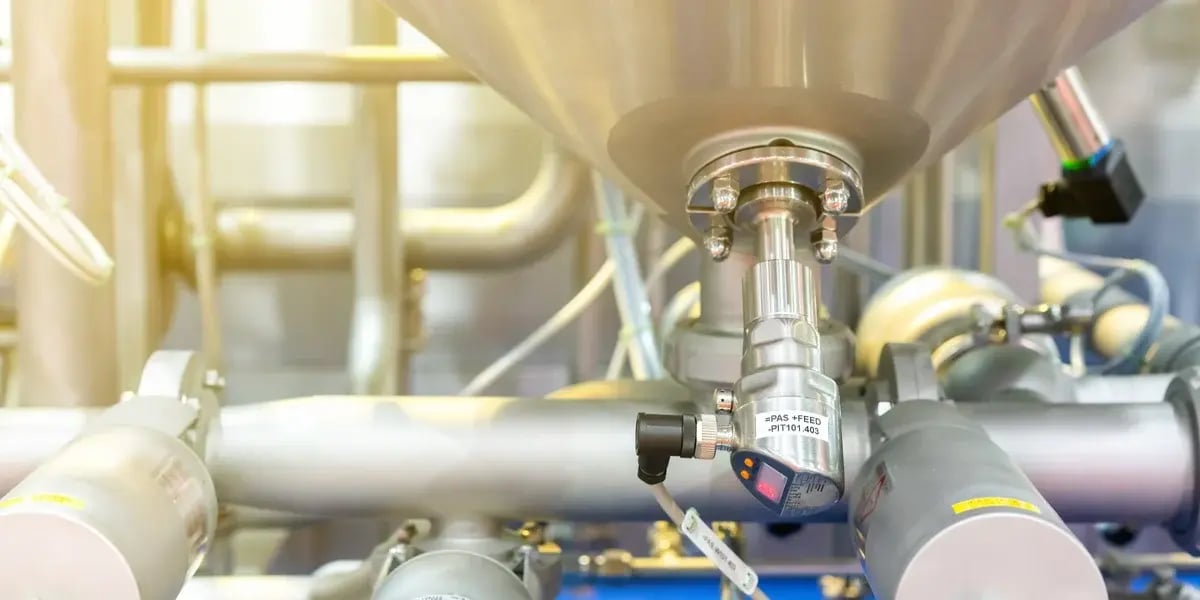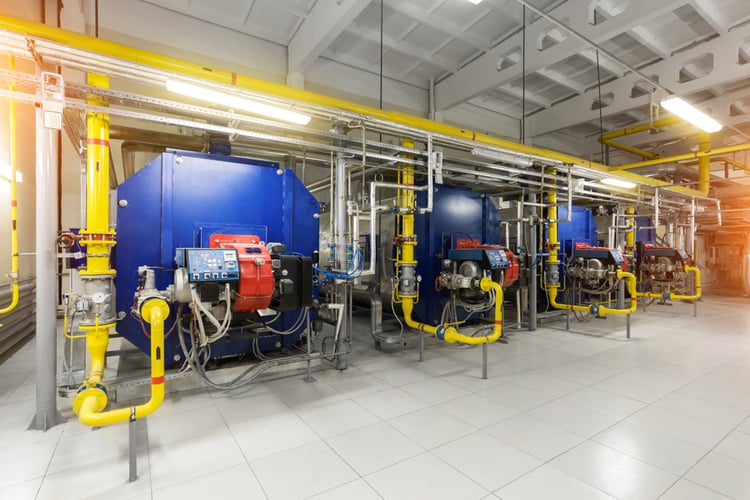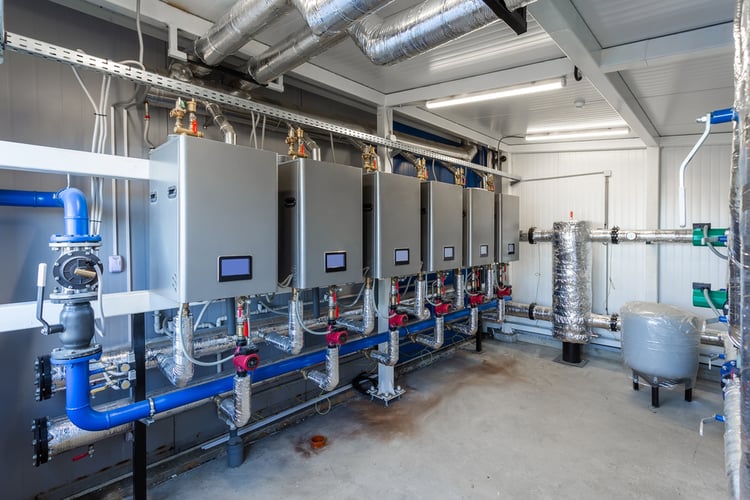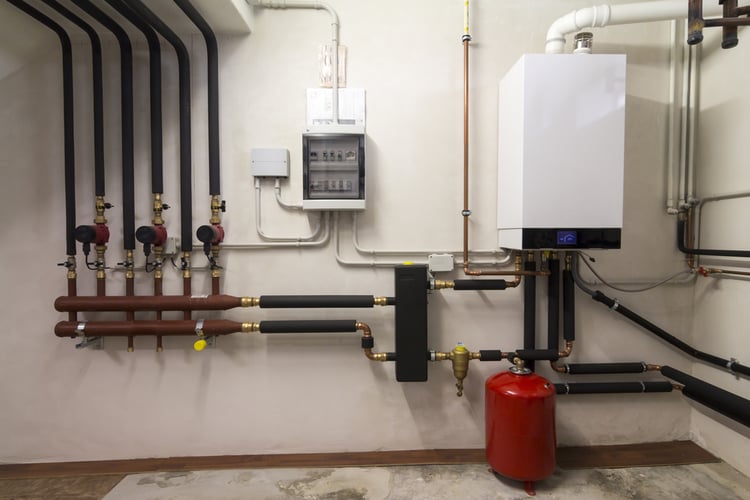What is a Boiler? | Types, Components & Classification 2024

Chicago is one of the largest cities in the US, and the weather changes a lot during the year. Summer temperatures can exceed 90°F, and winter temperatures below -20°F have been reported during polar vortexes. January is typically the coldest month in the city.
With the increase in construction and the variable weather in Chicago, having reliable electric power and heating is imperative. Large buildings normally use boiler plants for their space heating needs:
- A boiler can be described as a closed container where a fluid is heated, and this basic design has applications like building heating, process heating, and power generation.
- Boilers were also used to power steam locomotives before electric and diesel trains were developed.
Boilers can get their heat from fuels like coal, natural gas, or heating oil. There are also electric boilers, but they are not viable in most applications due to their high operating costs. Boilers are also used to drive turbines in nuclear power plants, getting heat from a fission reaction.
Get a professional boiler design that meets the building codes of your city.
Main Components of a Boiler

Boilers are used as heat sources in hydronic HVAC systems. There are different types of boiler designs, but they generally have four main components:
- Burner: This component starts combustion, controlled by the electronic commands from a thermostat. The burner nozzles spray and ignite the fuel, heating the water inside the boiler.
- Combustion Chamber: The fuel is burned inside the combustion chamber, which is commonly made of cast iron. According to the ASME Boiler and Pressure Vessel Code, the temperature of a commercial heating boiler can reach up to 250°F.
- Heat Exchanger: This component provides heat from the combustion chamber to the water without direct contact, similar to a boiling pot. The pressurized hot water is then pumped to radiators or fan coils, to provide space heating.
- Plumbing System: Host water is distributed through an insulated piping network, and the design and material can change depending on the type of boiler.
Heating can represent 25-30% of total energy costs for a commercial building in Chicago, but a high-efficiency boiler can reduce this by 10-30%. On the other hand, the wrong type of boiler can easily increase your heating costs. To ensure that your building uses the most suitable boiler type, the best solution is getting professional MEP engineering services.
Even if you purchase the best boiler available, preventive maintenance is important to keep your energy costs low. This includes:
- Removing debris and residue in the combustion chamber
- Replacing the gaskets and other components when necessary.
- Temperature testing.
Boiler systems should only be maintained and installed by licensed technicians. If they are not properly installed and serviced, fatal accidents can occur.
Boiler Classification by Material

Steel and cast iron are two of the most common boiler materials, and each has advantages and disadvantages. Steel boilers can be classified into two subtypes: fire-tube boilers and water-tube boilers.
Fire-Tube Steel Boiler
In this type of boiler, combustion gases circulate through straight tubes that are surrounded by water. This process heats the water, which is then circulated through the building for space heating, and the same design can be used to produce steam.
| ADVANTAGES | DISADVANTAGES |
|
|
Fire-tube boilers are suitable for both commercial heating and industrial processes. Since they are compact, these boilers are also commonly used for marine service.
Water-Tube Steel Boiler
In this type of boiler, water is circulated through tubes that are surrounded by hot combustion gases. In other words, a water-tube boiler is the exact opposite of a fire-tube boiler.
| ADVANTAGES | DISADVANTAGES |
|
|
Water-tube boilers are more suitable for industrial applications, rather than space heating.
Cast Iron Boiler
These boilers can have a single chamber, or they can be divided into vertical or horizontal sections. Depending on how the boiler is designed, these sections can be assembled with grommet seals, push nipples, or screw nipples with external headers.
- A one-piece boiler consists of a single-cast pressure vessel.
- Horizontal-section boilers are like pancakes, with stacked sections that are connected with push nipples.
- Vertical-section boilers have sections that stand vertically, similar to how a loaf of bread is cut.
What Is a Condensing Boiler?

A condensing boiler uses oil or gas combustion, and it condenses the water vapor contained in the exhaust gases to recover heat - as implied by its name. Condensing boilers are suitable for both space heating and industrial applications. By recovering the latent heat of water vapor, this type of boiler can achieve an efficiency of over 90%. Depending on the manufacturer and model, condensing boilers can be made of cast iron or steel.
The condensate produced when recovering heat is acidic, and boiler manufacturers use materials like stainless steel or aluminum alloys for the drainage system. For this same reason, the condensate is kept separate from the hot water produced by the boiler.
Using Boilers in Hydronic Systems
The term "hydronic" is used to describe systems where water is the heat-transfer medium, and this includes heating systems that use boilers with hot water piping. On the other hand, a forced-air heating system with a furnace is not hydronic, since the air is heated directly without using water as an intermediate fluid. Hydronic heating is common in large buildings, where a boiler plant heats water, and air handlers with heating coils are used for individual areas.
Conclusion
Professional organizations like the American Society of Mechanical Engineers (ASME) develop standards for many types of equipment, including boilers. Historically, boilers were a common cause of property damage or fatal accidents, especially when regulations were still being developed. If you are planning a construction project that uses boilers, choosing a professional engineering firm and licensed contractors is crucial for safety.
Another advantage of working with experienced engineers is getting energy efficiency recommendations during the design process. This reduces the fuel consumption of your boiler plant, saving thousands of dollars in heating bills in the long run.

Michael Tobias
Michael Tobias, the Founding Principal of NY Engineers, currently leads a team of 50+ MEP/FP engineers and has led over 1,000 projects in the US
Join 15,000+ Fellow Architects and Contractors
Get expert engineering tips straight to your inbox. Subscribe to the NY Engineers Blog below.



